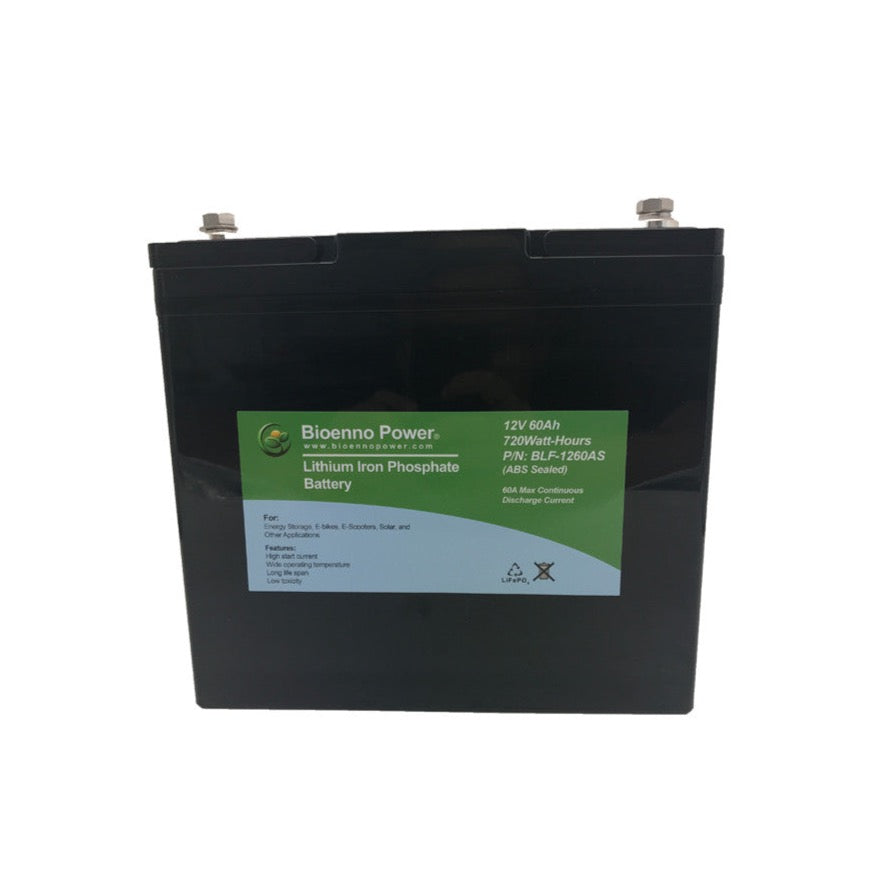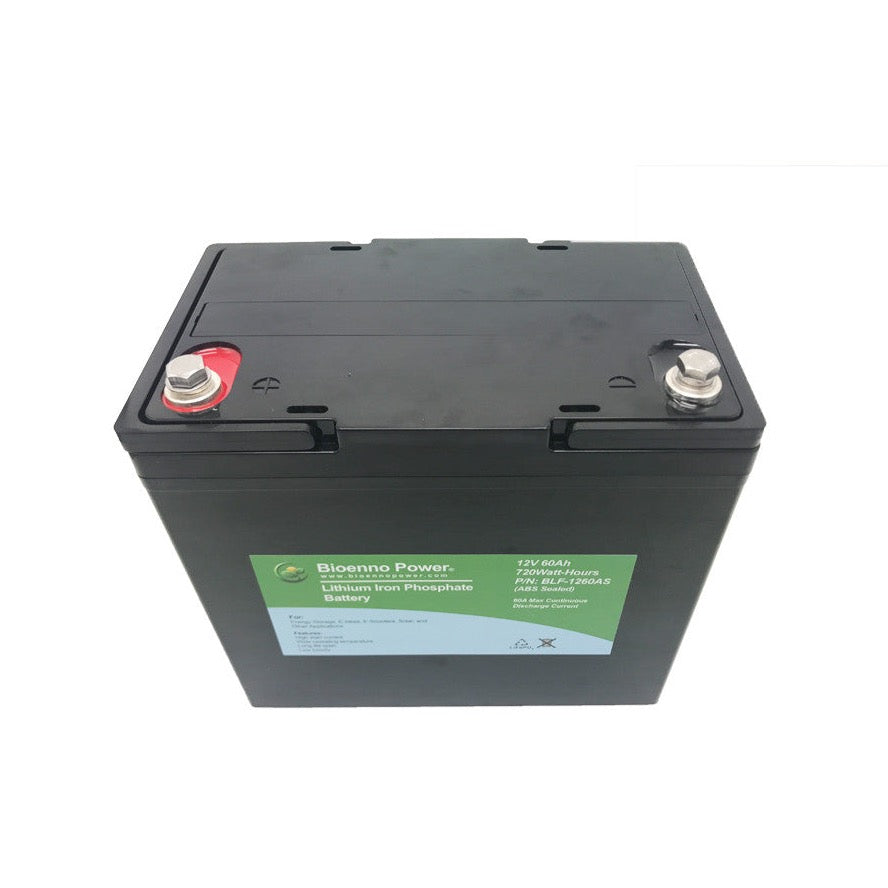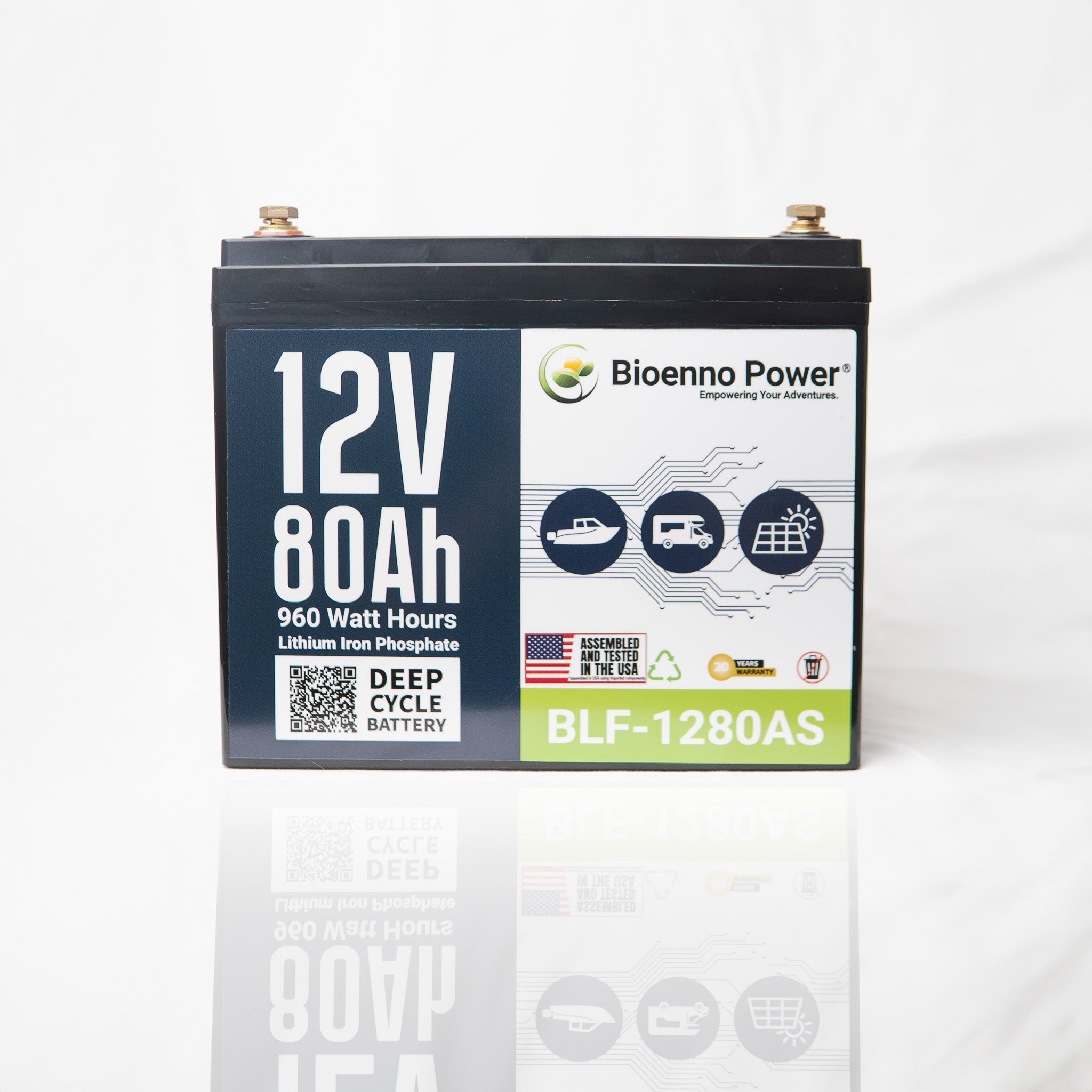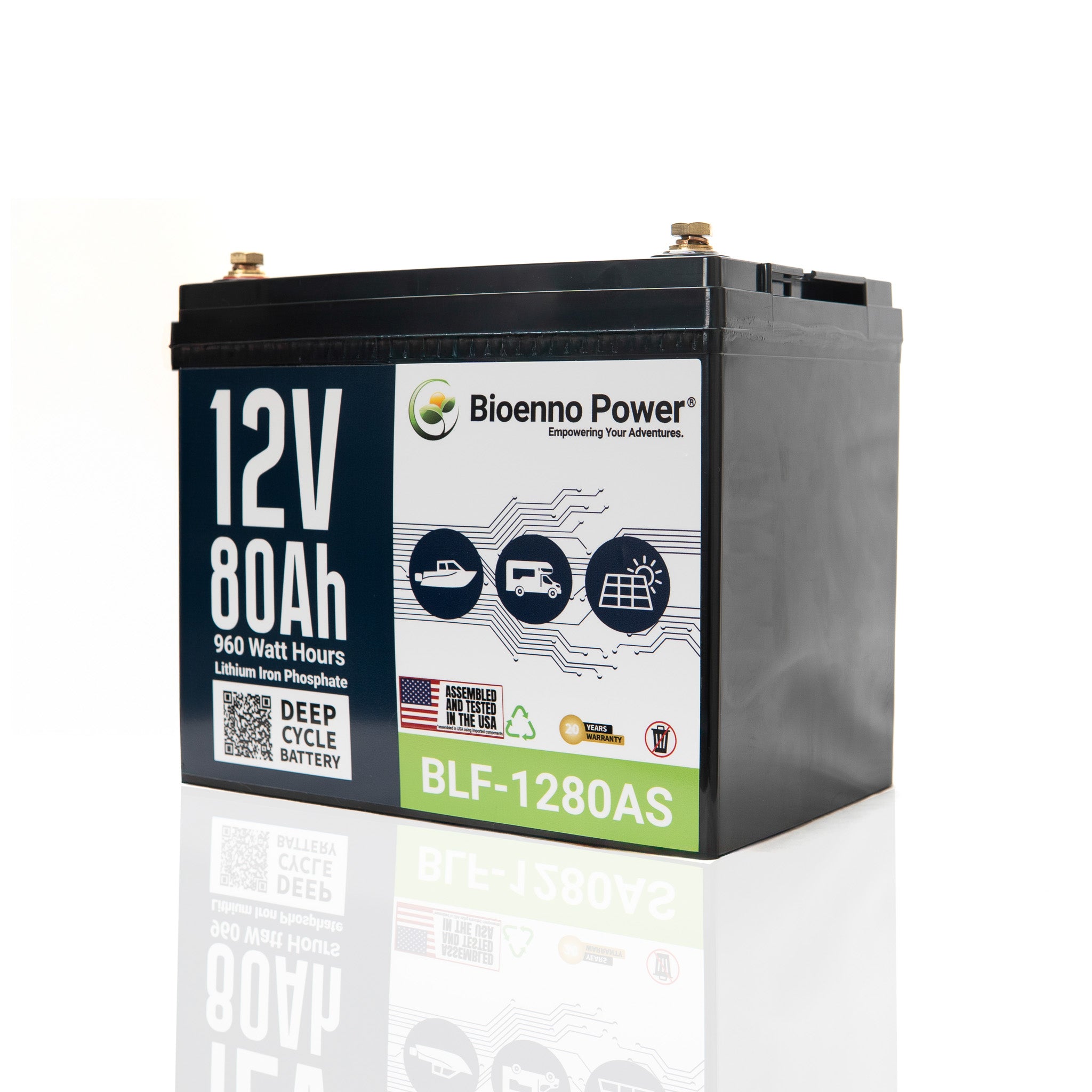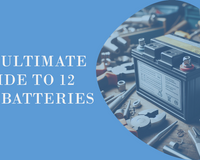Keep Your LiFePO4 Batteries Safe, Healthy, and Ready for Spring
As the temperatures drop and off-grid adventures wind down, it’s time to turn your attention to one of the most overlooked components in your gear: your battery.
Whether you're powering a boat, RV, van, or portable solar system with a Bioenno Power LiFePO4 battery, proper maintenance during the colder months ensures your battery stays in peak condition and ready to perform when spring rolls around.
In this guide, we’ll walk through essential battery maintenance tips for fall and winter, designed specifically for LiFePO4 battery users storing their systems during the off-season.
Why Winter Battery Maintenance Matters

Cold weather doesn’t just slow down your weekend plans, it also affects lithium battery chemistry. While LiFePO4 batteries are more resilient than traditional lead-acid options, improper storage can still shorten their lifespan, reduce performance, or even cause irreversible damage.
By following a few simple steps, you can:
-
Extend the battery’s usable life
-
Prevent voltage drops or deep discharges
-
Maintain optimal capacity
-
Protect your investment over the long term
1. Store at the Correct State of Charge
One of the most important things to know about storing your LiFePO4 battery is this:
Never store it fully charged or fully drained.
Ideal storage charge: 50%–70%
This range helps reduce stress on the cells during long-term storage and avoids both over-discharge and over-voltage strain.
If your battery has a built-in Battery Management System (BMS), which all Bioenno LiFePO4 batteries do, it offers added protection. Still, setting the correct state of charge before storage is key.
2. Disconnect All Loads
Before putting your system away, disconnect all devices or systems drawing power, even the small ones.
Examples of passive loads:
-
LED indicators
-
GPS units
-
Monitors or inverters
-
12V USB chargers
Even low-level draw can slowly discharge a battery over weeks or months, pushing it below its safe voltage range. Disconnect all accessories to preserve power and avoid unexpected issues.
3. Avoid Freezing Temperatures
LiFePO4 batteries are more cold-tolerant than lead-acid, but freezing temperatures (especially during charging) can still be dangerous.
Best storage temperature:
32°F to 77°F (0°C to 25°C)
If you’re storing your battery in a garage, boat cabin, or RV, make sure it’s not exposed to sub-freezing temperatures, particularly if there’s any chance of it being charged while cold. Charging a LiFePO4 battery below 32°F can permanently damage its cells.
Tip: Bring your battery indoors or into a temperature-stable storage container during the coldest months.
4. Check Voltage Periodically
Even when disconnected and stored, lithium batteries can very slowly self-discharge. For long-term storage (3+ months), check the voltage every 30 to 60 days.
-
If voltage drops below 12.8V (for a 12V battery), top it up slightly using a compatible LiFePO4 charger
-
Avoid letting it drop below 10V, which can trigger BMS shutdown or damage
Bioenno Power batteries include a BMS to help prevent dangerous over-discharge, but manual checks are still a smart part of seasonal maintenance.
5. Clean and Inspect Before Storing
Before putting your battery away for the season, give it a quick inspection and cleanup.
-
Wipe down with a dry cloth to remove dust and moisture
-
Check terminals for corrosion or loose connections
-
Inspect casing for cracks, swelling, or damage
-
Label your charge date or voltage on the battery if you’ll be storing multiple units
These small steps help avoid surprises in the spring and ensure your battery is stored in top condition.
6. Don’t Forget the Accessories
If you use your LiFePO4 battery with a solar charge controller, inverter, or portable power system, store those components properly too:
-
Keep them dry and protected from moisture
-
Wrap cables loosely (avoid kinks or stress on terminals)
-
Remove fuses or turn off switches to avoid parasitic draw
-
Store in a climate-stable environment when possible
Even the most durable gear benefits from thoughtful off-season care.
7. Use a Battery Storage Bag or Hard Case
For added protection, consider storing your battery in a padded bag or hard case, especially during transportation or in shared storage spaces like garages or gear closets.
These prevent:
-
Accidental impacts
-
Short circuits from metal tools or hardware
-
Unwanted moisture buildup
Bioenno Power offers compatible accessories to keep your batteries safe in any season.
Winter Use? Consider a Heated Setup
If you're using your battery during winter (ice fishing, winter overlanding, emergency backup), consider a battery with a built-in heater or store the battery in an insulated compartment.
Never charge a LiFePO4 battery below 32°F unless the battery specifically includes low-temperature charging support.
Can I Keep My Battery Hooked Up to Solar?

If your RV, van, or boat is equipped with a solar panel system, you might be wondering whether you can leave your battery connected to solar through the winter months. The short answer is yes, but only under the right conditions.
You should ensure:
-
Your charge controller is LiFePO4-compatible
-
Temperatures do not drop below 32°F while charging
-
The solar setup includes overcharge protection
When done right, a trickle charge from solar can help maintain ideal voltage during long-term storage. Just keep an eye on sunlight availability and voltage levels and avoid charging cold batteries, which can damage lithium cells.
Why LiFePO4 Is Perfect for Seasonal Storage
One reason LiFePO4 batteries outperform traditional lead-acid units in off-season storage is their extremely low self-discharge rate, usually around 2% per month.
Unlike lead-acid batteries, lithium iron phosphate:
-
Doesn’t sulfate during inactivity
-
Doesn't require trickle charging every week
-
Bounces back quickly once reconnected
That means less babysitting during the winter and more confidence when you fire things back up in the spring. For outdoor enthusiasts, overlanders, and off-grid travelers, Bioenno Power LiFePO4 batteries offer peace of mind all year long.
Final Thoughts: Protect Now, Power Later
Taking just a few minutes to properly store your LiFePO4 battery this fall can save you time, money, and frustration when you’re ready to hit the road or water again in spring.
At Bioenno Power, our lithium batteries are designed for durability, but even the best gear benefits from a little off-season care.
Have questions about winter storage or how to monitor your battery safely? Contact our team or explore our support resources to get personalized advice for your setup.


